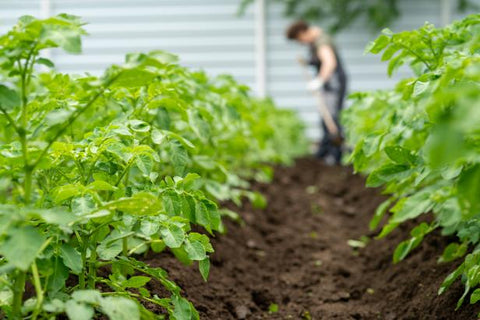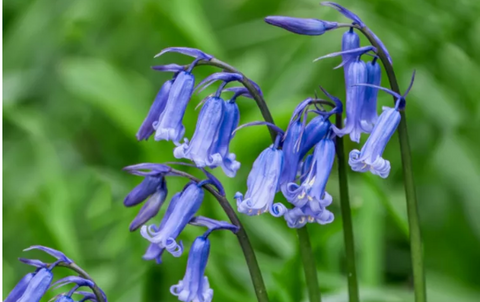The air is still now, no longer swirling with the chaotic fury of the storm. The winds have finally calmed, and the torrential rain has moved on to other regions. Your backyard, however, remains a testament to nature’s wrath. Trees are uprooted, your favorite plants battered, and your carefully tended garden seems to lie in ruin. So, what comes next? Is there hope of recovery amidst the wreckage?
Absolutely. After a storm, your garden holds incredible potential for revival. It’s time to shift your mindset from devastation to regeneration. A thriving, resilient garden is still within your grasp—it just requires patience, creativity, and a little know-how.

Assessing the Damage
Surveying the Scene: Understanding Garden Loss
Before plunging into action, take a moment to assess the situation. What plants have been damaged beyond repair? Which areas are salvageable? Wander through your garden with fresh eyes, recognizing the pockets of hope hidden amidst the destruction. While some plants may seem doomed, others may surprise you with their resilience. Each branch and root tells a story—some of recovery, others of rebirth.
Documenting Damage: Why It Matters for Restoration
Keeping a record of the damage is not just about nostalgia; it's a practical step towards restoration. Documenting the impact of the storm helps you track your progress and, if necessary, can aid in insurance claims. It also helps you strategize a future where your garden is stronger than ever, learning from what failed and what survived.
Prioritizing Safety Before You Begin: Power Lines, Debris, and More
Before diving into the restoration process, prioritize safety. Downed power lines, broken branches, and hazardous debris can pose serious risks. Ensure your garden is safe to enter and work in before you pick up any tools. The most beautiful garden in the world isn’t worth jeopardizing your wellbeing.
Preparing for Recovery
Clearing the Rubble: Debris and Fallen Branches
A fresh start requires a clean slate. Begin by removing fallen branches, scattered debris, and any uprooted plants that can’t be saved. This task may seem overwhelming at first, but clearing the chaos sets the foundation for recovery.
Saving What’s Left: Can Your Plants Be Salvaged?
Not everything needs to be uprooted and discarded. Some plants may surprise you with their resilience. Gently inspect the root systems—if they're intact, your plants stand a chance of recovery. Prune damaged limbs and provide support where needed. Give them time, and you might see unexpected regrowth.
Tending to the Soil: Has It Been Washed Away or Compacted?
Storms do more than damage the visible aspects of your garden. Heavy rains often wash away topsoil or leave it compacted and suffocated. It’s essential to assess your soil’s condition before replanting. Restoring the earth beneath your plants is the first step to bringing your garden back to life.
Soil Rehabilitation
Nurturing Your Soil Back to Life: Organic Solutions
Your soil is the heart of your garden, and after a storm, it will need some nurturing. Organic solutions, such as compost or aged manure, help restore life to depleted soil. These natural fertilizers reintroduce essential nutrients, giving your plants the foundation they need to thrive.
Preventing Erosion in Future Storms: Tips and Techniques
To fortify your garden against future storms, consider installing ground covers or mulch to protect the soil. Erosion is a silent enemy, one that strips your garden of its nutrient-rich layers. By planting cover crops or using mulch, you can ensure the soil remains where it belongs—supporting life.
Replenishing Nutrients: What Your Soil Needs After the Storm
A storm often washes away crucial nutrients, leaving your soil barren. To restore its fertility, focus on replenishing nitrogen, phosphorus, and potassium—essential elements for healthy growth. Organic fertilizers, like bone meal or seaweed extracts, work wonders in bringing life back to the earth.
Water Management Post-Disaster
Dealing with Waterlogged Gardens: Drainage Solutions
Waterlogged soil can suffocate your plants, leading to root rot or fungal infections. If your garden is still sodden after the storm, implement drainage solutions such as French drains or raised beds. The key is to promote healthy water flow while preventing future pooling.
Preventing Root Rot: Signs to Watch Out For
Root rot is an insidious foe that often goes unnoticed until it’s too late. Watch for yellowing leaves, wilting, or an overall lack of growth in your plants. These are early indicators that your plants’ roots are drowning. Act quickly to improve drainage and aeration to give your plants a fighting chance.
Revamping Your Irrigation System After a Storm
Storms can wreak havoc on irrigation systems. Broken pipes or clogged drip lines can lead to water imbalances, harming your garden in the process. Take this opportunity to inspect and revamp your system, ensuring that future waterings are efficient and well-distributed.

Reviving Your Garden Layout
Reconsidering Your Garden Design: Storm-Resistant Options
A post-storm garden is a blank canvas—an opportunity to rethink your layout with storm resilience in mind. Consider redesigning your garden to include features like windbreaks or raised beds, which help protect plants during future weather events.
Using Raised Beds and Planters to Minimize Future Damage
Raised beds offer more than aesthetic appeal; they also provide practical benefits in storm-prone areas. Elevating your plants helps prevent waterlogging and erosion, giving your garden an extra layer of defense against future storms.
Rebuilding Hardscapes: Patios, Walkways, and Fences
Hardscapes—your patios, walkways, and fences—are often damaged in severe weather. Rebuilding these structures is not only about aesthetics; it’s about creating a garden space that is both functional and fortified against the elements.
Choosing the Right Plants
Storm Survivors: Hardy Plants That Stand Up to Nature
Certain plants are naturally more resilient to storm damage. Species such as bamboo, coastal grasses, and tough perennials can withstand high winds and heavy rain. Choosing hardy plants ensures your garden can better endure future storms with minimal damage.
Native Plants vs. Exotic Species: Which Works Best After a Storm?
Native plants are often your best bet after a storm. They’ve adapted to your local climate and are naturally more resilient. Exotic species, on the other hand, may struggle to recover in storm-prone environments. Choosing wisely means fewer losses in the future.
Resistant Plants for the Future: Building a Resilient Garden
To future-proof your garden, prioritize planting species known for their resistance to wind, rain, and temperature fluctuations. By creating a diverse, resilient garden, you set the stage for long-term success, no matter what nature throws your way.
Restoring Trees and Shrubs
Caring for Damaged Trees: Pruning or Removal?
Trees often take the brunt of a storm’s power. Deciding whether to prune or remove them depends on the extent of the damage. Minor limb loss can be corrected with careful pruning, but severely damaged trees may need to be removed for safety reasons.
Restoring Shrubs: When to Save and When to Replace
Shrubs, though smaller, can be surprisingly hardy. If their root systems are intact, many shrubs will bounce back after a storm. However, those that have been uprooted or broken beyond repair should be replaced to keep your garden looking its best.
Creating Windbreaks with Shrubs and Trees: Natural Defense
Strategically planting shrubs and trees to create windbreaks can offer natural protection to your garden. These barriers slow down wind speeds and shield delicate plants, ensuring that your garden stands a better chance in future storms.

Replanting Strategies
Starting Seeds Indoors: A Fresh Start for Your Garden
Starting seeds indoors offers a fresh beginning for your garden. By nurturing young plants in a controlled environment, you give them a head start before reintroducing them to the elements.
Fast-Growing Crops for Quick Results Post-Storm
If you’re eager to see your garden flourish again, consider planting fast-growing crops like lettuce, radishes, or beans. These plants offer quick results, helping to restore your garden’s vibrancy in a short amount of time.
Companion Planting to Foster Stronger Growth After Damage
Companion planting—pairing plants that benefit each other—can be an excellent strategy for post-storm recovery. Certain combinations, like basil with tomatoes, encourage stronger growth and help restore balance to a disrupted ecosystem.
Protecting Against Future Storms
Building a Storm-Resilient Garden: Practical Tips for Long-Term Success
A storm-resilient garden starts with smart planning. Choose hardy plants, invest in durable garden structures, and create water management systems that help mitigate damage. The goal is not just to recover from this storm, but to prepare for the next one.
Installing Storm Barriers: Fences, Tarps, and Temporary Shelters
Temporary solutions, such as tarps or windbreak fences, can provide your garden with extra protection during storm season. These barriers help shield plants from high winds and heavy rain, giving them a better chance to survive extreme weather.
Mulching for Storms: Protecting Roots and Preventing Erosion
Mulch is one of your garden’s best defenses against the elements. A thick layer of mulch not only protects delicate roots but also helps prevent soil erosion during heavy rain.
Embracing Eco-Friendly Solutions
Composting the Aftermath: Turning Debris into Rich Soil
The fallen leaves, branches, and plant matter left behind after a storm don’t need to go to waste. Turn debris into compost, creating nutrient-rich soil that can help your garden recover while reducing your environmental footprint.
Sustainable Gardening After Storms: Reducing Environmental Impact
Storms provide an opportunity to embrace sustainable gardening practices. From water conservation techniques to organic pest control, there are many ways to rebuild your garden with the environment in mind.
Rainwater Harvesting to Handle Excess Water in the Future
Rainwater harvesting is an excellent way to handle excess water and ensure your garden stays hydrated during dry spells. By collecting rainwater, you not only prevent runoff but also reduce your dependency on municipal water sources.

Emotional Reconnection with Your Garden
Healing Through Gardening: Finding Peace After Nature’s Fury
Gardening is more than just planting and pruning—it’s an emotional journey. After the chaos of a storm, reconnecting with your garden can be a healing process. Each new sprout represents hope, and each fresh blossom is a step toward recovery.
Learning to Let Go: Accepting What Can’t Be Restored
Not every plant or tree can be saved. Part of the process is learning to let go and accepting that nature sometimes forces us to start anew. With every loss, however, comes an opportunity for growth and renewal.
The Joy of Rebuilding: Why Your Garden Is Worth It
Rebuilding your garden after a storm is a labor of love. As you watch life slowly return to your space, you'll rediscover the joy that comes with nurturing something from the ground up. The resilience of nature, and your role in it, will fill you with a profound sense of accomplishment.
Gardening after a storm is not just about restoring what was lost, but about building something stronger and more resilient. Each storm is a reminder of nature’s power, but also of its ability to heal. With careful planning, thoughtful choices, and an enduring commitment, your garden can not only survive future storms but thrive in the face of adversity. The journey of recovery is one of growth—for your garden and for you. Year after year, your garden will stand as a testament to resilience, strength, and hope.









